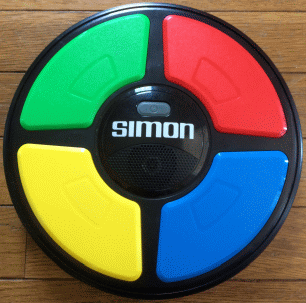 The standard game in a newer, streamlined form factor.
The standard game in a newer, streamlined form factor.
|
|
|
These repeat-sequence games require the player(s) to repeat a sequence of lights and tones.
Atari released a stand-up coin-operated arcade game called Touch Me in 1974 that utilized four buttons and emitted four corresponding tones, requiring the player to repeat an ever-lengthening sequence. Three mistakes and the player lost. Ralph Baer (creator of the Magnavox Odyssey, released in 1972) and Howard Morrison saw Touch Me at the annual Music Operators of America convention in Chicago in November 1976. Ralph's impression: "Nice game idea, terrible execution... visually lousy, miserable sounds." They realized the core game concept would make a great handheld game and pitched the idea to Marvin Glass & Associates, an independent toy design firm. The go-ahead was given to work on the project, renamed Follow Me. Lenny Cope, one of Baer's partners, wrote the firmware for a Texas Instruments TMS1000 microprocessor using a Teletype terminal dialed in to a mainframe computer in Pennsylvania that held the TI software tool for the device. Baer selected four notes from the bugle (in the third and fourth octaves): G4, C4, E4 and G3, to make the sounds more pleasing to the ear regardless of the order in which they are played. After filing for a patent in July 1977 (Baer and Morrison were awarded U.S. patent 4,207,087 for "a microcomputer controlled game"), they demonstrated a prototype to Milton Bradley, who licensed the game and renamed it Simon (after the children's game Simon Says). From the patent:
A game utilizes a microprocessor for controlling the play of one or more games in which a participant may play against the machine or against another participant. When played against the machine, the machine generates a random sequence of tones which must be accurately repeated by the participant. The machine then repeats the latest sequence and adds another tone to the sequence. The process is repeated until the participant makes an error, or until the sequence reaches a predetermined length. When played between two or more participants, each participant increases the length of the sequence until one of the participants makes an error whereupon the machine "eliminates" the player. The machine keeps track of the longest correct sequence and indicates which participant is in error. Doug Montague received U.S. design patent USD253786S for the "Electronic game housing" of Simon. Simon was officially presented to the public on May 18, 1978 during a late-night event at Studio 54 in New York. After four years on the market, at the end of 1982 more than 10 million Simon games had been sold.
|
|
Playing Simon can have several psychological effects, many of
which relate to cognitive functioning, emotional responses, and even
social interactions. These effects, both short- and long-term, can be
attributed to the game’s design, which challenges players to recall
and replicate patterns of lights and sounds.
Simon exercises working memory by requiring players to remember and replicate increasingly complex sequences. This repeated challenge can help improve short-term memory capacity and enhance the ability to focus on and retain information. The game demands undivided attention, as missing a single light or tone results in failure. This fosters concentration and the ability to tune out distractions, skills valuable in both academic and professional settings. Players develop the ability to recognize and anticipate patterns, a cognitive skill that extends to problem-solving, strategic thinking, and learning in other areas of life. By gradually increasing the complexity of sequences, Simon pushes the brain to handle more information under pressure, improving the capacity to manage cognitive load and process information efficiently. Failing to replicate a sequence can be frustrating, but this frustration can also teach resilience and encourage players to keep trying. Overcoming challenges in the game can foster a sense of achievement and satisfaction. The ticking pace of the game, combined with its requirement for precision, can trigger a mild stress response. This "good stress" can help players improve their ability to perform under pressure. Successfully completing a complex sequence or beating a high score can evoke feelings of joy, pride, and accomplishment, reinforcing positive emotional experiences. For younger players, Simon can have developmental benefits, including promotion of hand-eye coordination as they synchronize their physical responses with visual and auditory cues, helping develop sequential thinking and planning skills, and encourages patience and delayed gratification, as players work toward mastering longer sequences over time. When played in a group setting, Simon fosters friendly competition or teamwork. Players may take turns, challenge each other, or collaborate to beat the game, enhancing social bonds.
|
 The standard game in a newer, streamlined form factor.
The standard game in a newer, streamlined form factor.
|
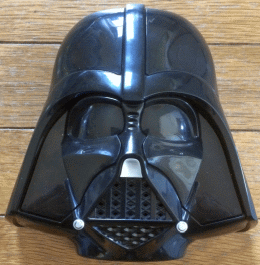 The standard game in a Darth Vader form factor.
The standard game in a Darth Vader form factor.
It plays a few notes of the Vader theme when powered on.
|
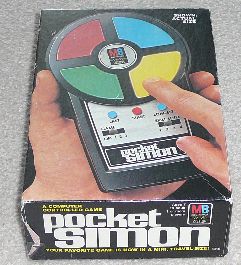 The standard game in a smaller form factor.
The standard game in a smaller form factor.
The Pocket Simon game uses a custom processor chip identfied as a MB4850, which is apparently a cost-reduced, mask-programmed version of the original TMS-1100. It also contains a SN75494N (hex digit driver), an interface to the lights and piezo sounder.
|
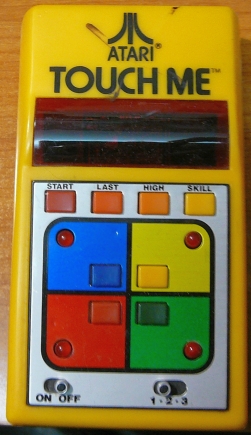
After the runaway success of Simon, Atari revamped their stand-up arcade game into a handheld version. The history of the Atari game Touch Me begins in the early 1970s as part of the growing interest in electronic memory and reflex games. It was one of Atari’s early ventures into handheld and arcade-style games focused on pattern recognition. Touch Me was first introduced by Atari in 1974 as an arcade machine. It featured a simple interface with four colored buttons and corresponding tones. Players had to replicate an increasingly complex sequence of lights and sounds. Although the concept was engaging, the arcade game had basic graphics and a monotone sound design, which limited its popularity compared to later similar games. In 1978, Atari revisited Touch Me and released a handheld version. This device was a direct competitor to Simon, which had been released by Milton Bradley that same year. Simon, designed by Ralph Baer and Howard J. Morrison, became far more successful due to its richer sound design and more engaging presentation with colorful buttons that corresponded to different musical notes. In contrast, Atari's Touch Me had less vibrant colors and simpler sound cues, which contributed to its lack of broad commercial success.
|
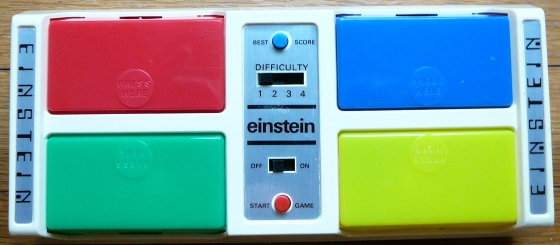
|
Click here for the games page.
Click here for the wanted page.
Click here for the home page.
Click here for the wanted page.
Last updated January 8, 2025